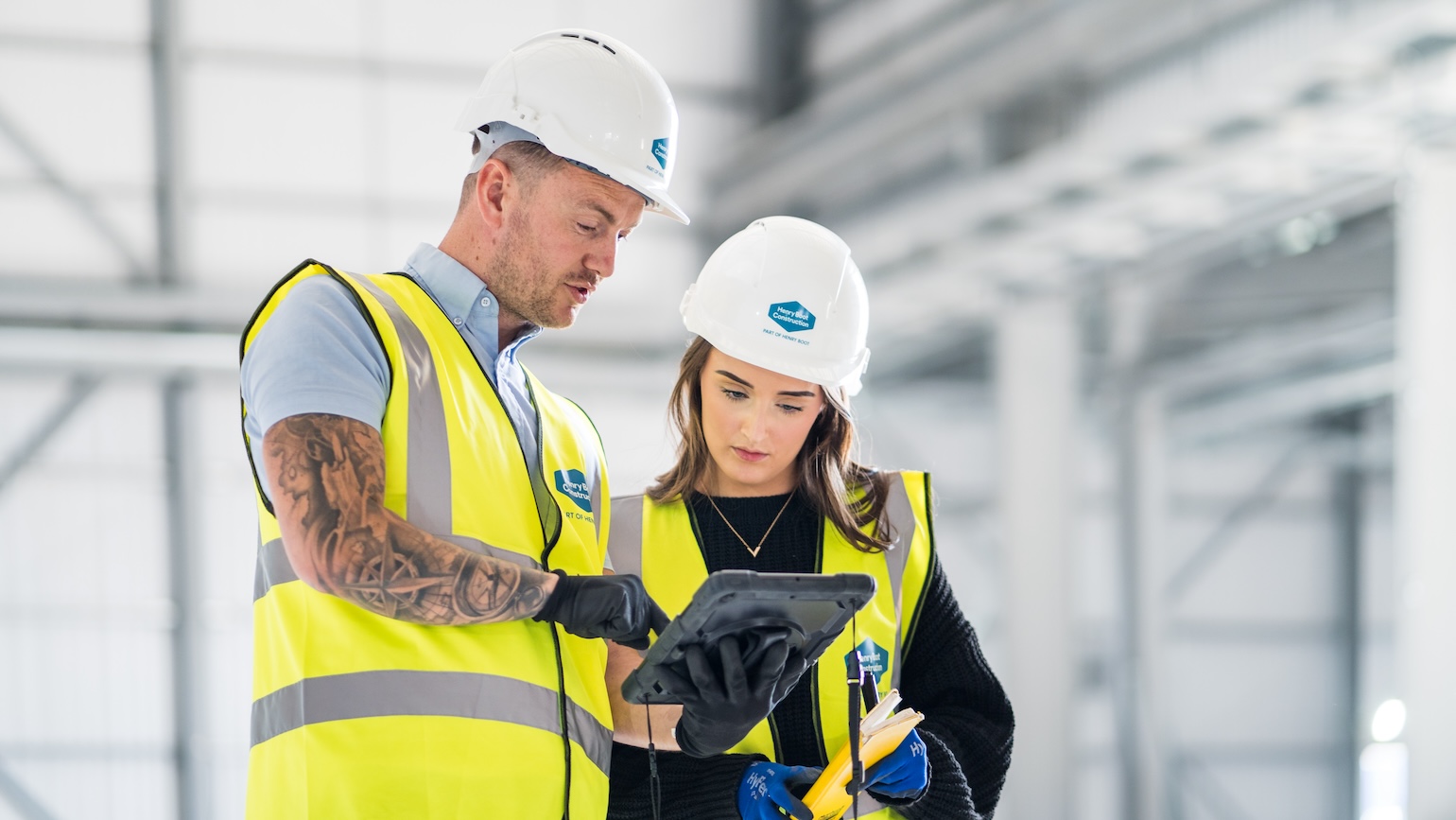
Four years ago BIMplus spoke to Phil Lambourne MCIOB, head of design and information management at Henry Boot Construction, about embedding BIM in the contractor’s operations. In a belated sequel, we find out how the contractor chooses and ensures adoption of digital tools.
BIMplus: What digital tools do you use and what are the benefits?
Phil Lambourne: We operate a ‘toolbox’ approach at Henry Boot Construction. Our starting point for adding any new digital tools to our operations was to streamline a fragmented set of systems to then bring everything into a one-stop shop. However, after conducting some detailed research, we discovered that we could implement an ecosystem of integrated digital tools that offer a wealth of operational and environmental benefits.
In recent years, we have successfully embedded several systems to support our business processes, improving areas such as supply chain management, document control, site inspections and payments. This enables digital management of the entire pre-construction and construction process and ensures our team can work in partnership with our clients and supply chain.

“To further enhance our inspection process, we encourage our in-house teams and partners to report any potential issues through dedicated QR code points across our sites.”
We store all our project data on a CDE, ensuring all information is consistent at each project stage and that we can track data throughout the life of a project. The platform brings together data from the many elements that make up a construction project – such as design information, health and safety performance, and quality inspections. We synchronise and store this information in one user-friendly secure location, accessible via desktops or mobile devices.
Although we use many of the platform’s traditional management tools, including meeting minutes and requests for information (RFIs), we’re seeing the most benefits in the day-to-day running of our construction sites. The site inspection tool speeds up quality assurance (QA) and health and safety inspections, with employees using mobile devices while out on site. Any issues are then immediately shared with the relevant partners, ensuring they’re addressed efficiently while the process is fully monitored.
To further enhance our inspection process, we encourage our in-house teams and partners to report any potential issues through dedicated QR code points across our sites (for example, in every apartment across a residential development).
Other key innovations we’ve implemented include the physical entrance turnstiles we deploy on our sites. Featuring the latest facial recognition software, these turnstiles ensure our sites are incredibly secure by only granting access to pre-approved personnel. The turnstiles also provide lots of useful data that helps us to track working hours, support staff wellbeing and measure our carbon footprint.
These core digital tools have had multiple benefits, including:
- We are more time-efficient. Minimising the duplication of daily tasks saves us valuable resource time and associated costs.
- Safety performance is more visible. We can check for any issues in real-time, creating safer work environments.
- We can make more informed decisions that are quicker and based on a more accurate and holistic pool of data.
- We are more sustainable. The use of digital tablets on and off site has drastically reduced the amount of paperwork we use as a business, supporting our carbon footprint ambitions.
What digital technology do you anticipate becoming commonplace in the future?
With all the systems companies now have in place to manage their processes, there is a clear shift to using data as a management tool. Linking information together in a data warehouse and using that live data to manage the day-to-day running of the businesses.
There are examples of companies moving towards dashboard reporting using live data and moving away from written monthly reports. This allows companies to delve into the detail of an issue to discover the root cause, facilitating more informed decision-making.
In addition, AI is emerging as a genuine construction tool across several disciplines. We are now more conscious than ever that AI can revolutionise the way we handle information to make decisions. From health and safety management to programming and optioneering, AI can support us so that construction workers can spend more time on value-added tasks.
What challenges does construction face when implementing digital tools?
Implementing digital technology is often limited by investment. There are tens of thousands of companies operating in the UK. Some of these businesses are colossal, but the vast majority are relatively small. This, combined with an industry that has such a changeable pipeline of work, limits how much people can sensibly invest in new technologies and training.
When times are tough, businesses are less likely to reinvest any limited profit they may have secured into digital tools, unless there are obvious quick wins and benefits to the bottom line.
“To allow for greater investment in technology, main contractors need to support SMEs and encourage them to trust in the value of technology.”
For SMEs, it can be a big deal to invest in substantial technology, both financially and logistically. To allow for greater investment in technology, main contractors need to support these smaller companies and encourage them to trust in the value of technology, removing as many barriers as possible.
Systems also need to be easy to use and solve a particular challenge aimed at improving working practices or efficiency. Our introduction of digital tools for inspections and QA has been the most successfully adopted technology. This is due to ease of use, with identical digital versions of paperwork forms produced, ensuring a seamless transition to the new platform.
It is important that people understand the benefits of technology and that it will be worth their time in the long term. And even once technology is implemented, it is always difficult to guarantee that tangible benefits will be realised and consistent use of technology across different construction sites.
As is always the case, having the right people involved in the project is vital to ensuring the maximum success, too.
To ensure better implementation of these systems, we collect and examine the numbers monthly and offer additional tailored support and training to individual teams where required. It takes time for tools to become fully embedded and used to their full advantage, but it is worth the effort.
Don’t miss out on BIM and digital construction news: sign up to receive the BIMplus newsletter.












